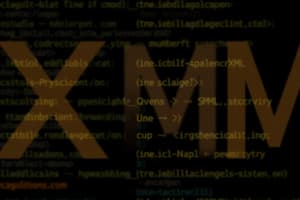Podcast
Questions and Answers
What does XML stand for?
What does XML stand for?
- Extended Markup Language
- Extensible Markup Language (correct)
- Exclusive Markup Language
- Extensible Multi-layer Language
XML documents can have multiple root elements.
XML documents can have multiple root elements.
False (B)
What is the file extension for JSON files?
What is the file extension for JSON files?
.json
XML is often used for ______ data over the Internet.
XML is often used for ______ data over the Internet.
Which data types are allowable as values in JSON?
Which data types are allowable as values in JSON?
Match the following elements with their definitions:
Match the following elements with their definitions:
In XML, tags are case-sensitive.
In XML, tags are case-sensitive.
What is JSON primarily designed to do?
What is JSON primarily designed to do?
Which of the following describes the structure of an XML document?
Which of the following describes the structure of an XML document?
In XML, comments are written using the same syntax as in JSON.
In XML, comments are written using the same syntax as in JSON.
What is the primary purpose of XML?
What is the primary purpose of XML?
In JSON, data is represented in ______ and value pairs.
In JSON, data is represented in ______ and value pairs.
Match the following JSON data types with their descriptions:
Match the following JSON data types with their descriptions:
Flashcards are hidden until you start studying
Study Notes
XML
- Stands for Extensible Markup Language.
- Designed to store and transport data efficiently while being self-descriptive.
- Commonly used for data distribution over the Internet or between different systems.
XML Tree Structure
- Consists of a single root element that can branch into multiple child elements.
XML Syntax Rules
- Must include a root element for proper structure.
- XML prologue (optional) appears on the first line, detailing XML version and encoding.
- Elements should have corresponding closing tags.
- Tags are case-sensitive, meaning <Tag> is different from
. - Elements must be properly nested to maintain hierarchy.
- Attributes must always be enclosed in quotes.
- Special characters like < or > are represented as entity references (< or >).
- Comments follow HTML formatting style.
- White space is preserved, unlike in HTML where it may be ignored.
- New lines are stored using Line Feed (LF).
- Documents that comply with these rules are referred to as 'well-formed' XML.
JSON
- Stands for JavaScript Object Notation.
JSON Syntax
- Data is organized into name/value pairs.
- Each data entry is separated by commas for clarity.
- Objects are contained within curly braces
{}. - Arrays are represented by square brackets
[]. - A name/value pair consists of a field name (double-quoted), a colon, and a value.
Allowed JSON Values
- Must be one of the following types:
- String (double quotes required)
- Number
- Object (JSON object)
- Array
- Boolean
- Null
File Extension
- JSON files are saved with the .json extension.
JSON and XML Example: Employees
- JSON: An "employees" object contains an array of three employee objects. Each employee object has "firstname" and "lastname" fields with corresponding values.
- XML: Root node 'employees' has three 'employee' child nodes, each containing 'firstname' and 'lastname' child nodes with their respective values.
XML
- Stands for Extensible Markup Language.
- Designed to store and transport data efficiently while being self-descriptive.
- Commonly used for data distribution over the Internet or between different systems.
XML Tree Structure
- Consists of a single root element that can branch into multiple child elements.
XML Syntax Rules
- Must include a root element for proper structure.
- XML prologue (optional) appears on the first line, detailing XML version and encoding.
- Elements should have corresponding closing tags.
- Tags are case-sensitive, meaning <Tag> is different from
. - Elements must be properly nested to maintain hierarchy.
- Attributes must always be enclosed in quotes.
- Special characters like < or > are represented as entity references (< or >).
- Comments follow HTML formatting style.
- White space is preserved, unlike in HTML where it may be ignored.
- New lines are stored using Line Feed (LF).
- Documents that comply with these rules are referred to as 'well-formed' XML.
JSON
- Stands for JavaScript Object Notation.
JSON Syntax
- Data is organized into name/value pairs.
- Each data entry is separated by commas for clarity.
- Objects are contained within curly braces
{}. - Arrays are represented by square brackets
[]. - A name/value pair consists of a field name (double-quoted), a colon, and a value.
Allowed JSON Values
- Must be one of the following types:
- String (double quotes required)
- Number
- Object (JSON object)
- Array
- Boolean
- Null
File Extension
- JSON files are saved with the .json extension.
JSON and XML Example: Employees
- JSON: An "employees" object contains an array of three employee objects. Each employee object has "firstname" and "lastname" fields with corresponding values.
- XML: Root node 'employees' has three 'employee' child nodes, each containing 'firstname' and 'lastname' child nodes with their respective values.
Studying That Suits You
Use AI to generate personalized quizzes and flashcards to suit your learning preferences.



